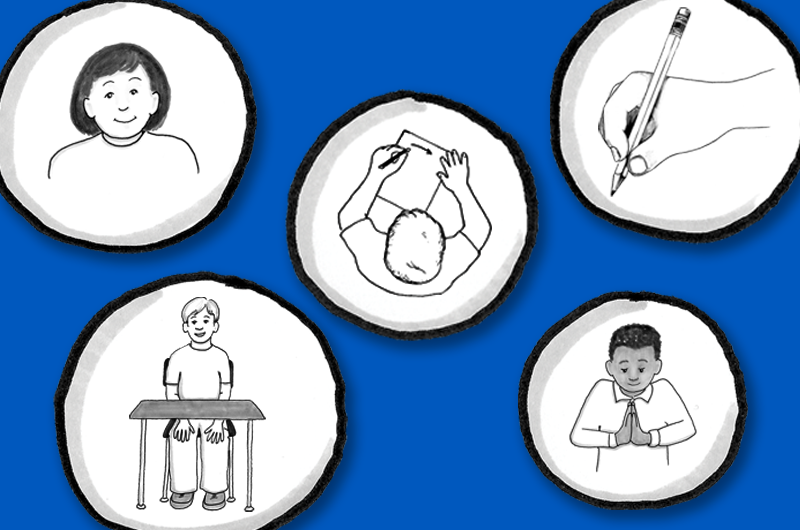Teaching Tips: The 4 Ps of Handwriting Instruction

Teaching handwriting can be simple! It might seem like a mystery when you think about how a child goes from indecipherable scribbling with crayons in Pre-K to neat and tidy cursive handwriting later in elementary school. But, don’t worry—you’ll get your students there! It’s easy to teach handwriting effectively when you remember the four “Ps” of handwriting: posture, paper, pencil grip, and placement.
Posture: Good sitting posture promotes good handwriting. This can be taught in kindergarten and reinforced in every grade. When considering a child’s posture, look at their desk. Does it fit their size? The right size and style of chair and desk affect school performance. Children don’t come in a standard size. Check that every child can sit with their feet flat on the floor and arms resting comfortably. Children who sit on their feet often will lose stability in their upper torso.
Paper: Give your students paper that has double lines for correct letter orientation. Watch our Why Double Lines? webinar to learn more about using double line paper to practice correct letter formation. In the meantime, try it for yourself with our double lines download. [download link]
Pencil grip: Grip is one of the foundations of handwriting. The most important thing to understand about pencil grip is that it doesn’t develop naturally—it is learned. Based on our years of experience helping children, we developed our own theories about how to develop good pencil grip habits effectively. Because children are born imitators, demonstration will lead to success. Learn how to teach your students to hold their pencils correctly and remediate poor grip in our Get a Grip! [LINK LINK] webinar.
Placement: Correct paper placement helps children move the writing hand across the page. Paper placement is different for left and right-handed children. There’s a misconception that people should slant their paper to make slanted writing. Not true. In fact, we slant paper so that it fits the natural arc of the forearm. Children who slant their papers properly can write faster because the arm moves naturally with the paper.

